Woodward & Lothrop Building
Introduction
Text-to-speech Audio
Images
The Woodward & Lothrop Building retains some of its historic character, including awnings that bear its name. Photo courtesy of Wikimedia Commons.
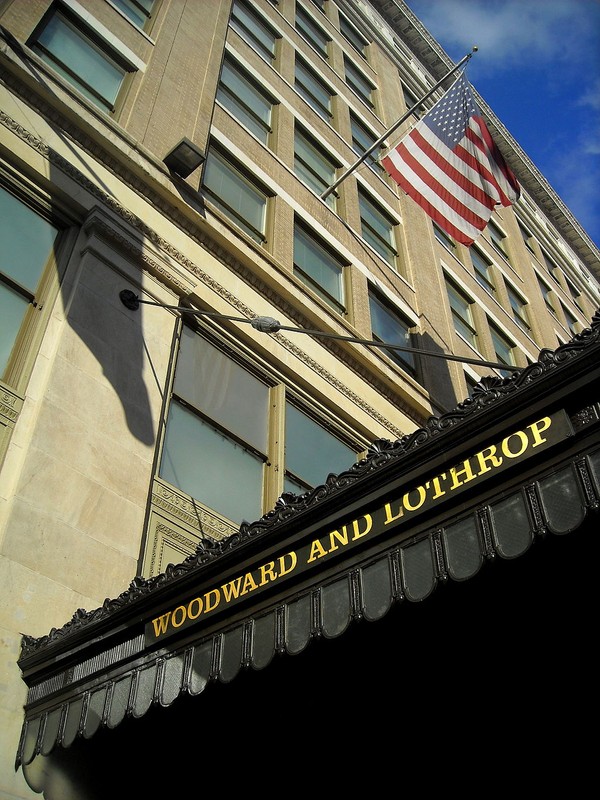
The Woodward & Lothrop department store in the early twentieth century, its original Carlisle Building at front. Photo courtesy of the Library of Congress.
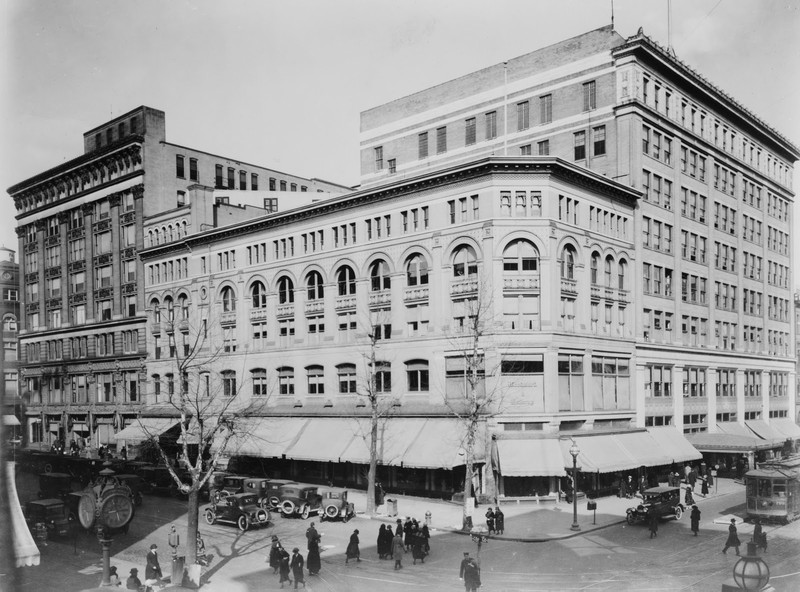
Truck delivery at Woodies in 1912. Photo by Harris & Ewing, Library of Congress.
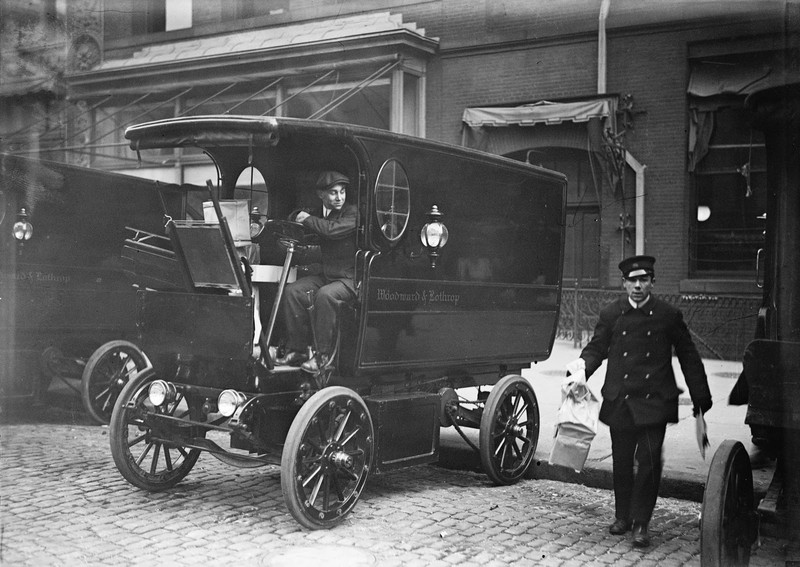
An elaborate window display at Woodies advertising a radio company. Photo circa 1918-1928, courtesy of the Library of Congress.
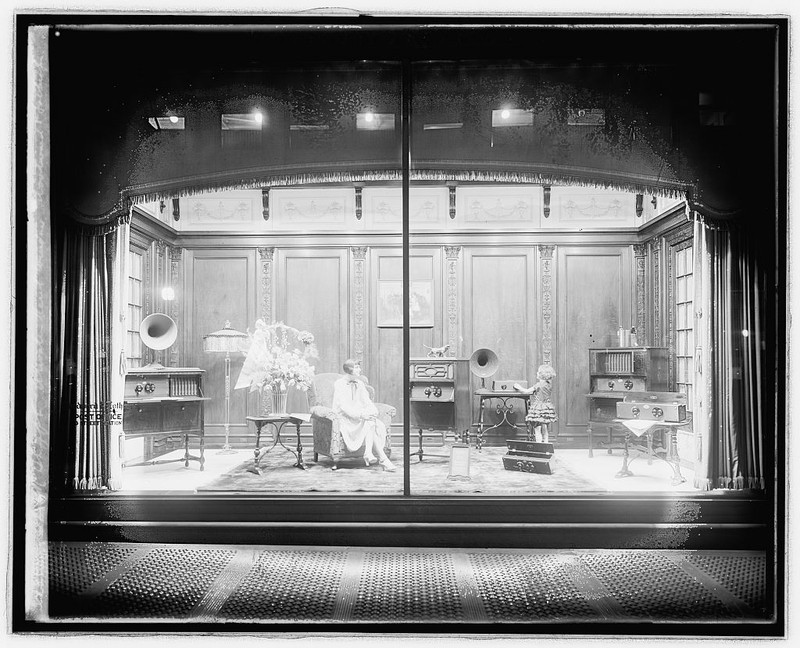
Children both working and playing in the Woodies toy department. Photo, 1924, courtesy of the Library of Congress.
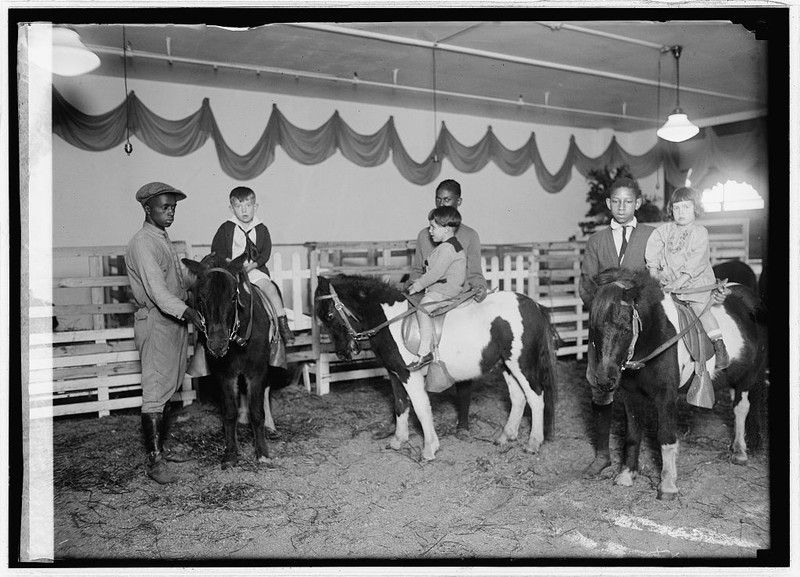
Monday night shoppers in 1965. Photo by Warren K. Leffler, Library of Congress.
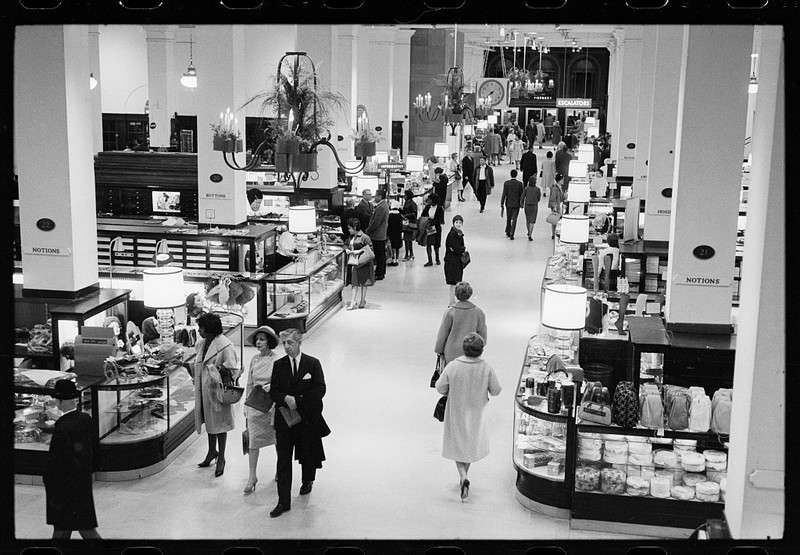
Christmastime in the 1950s, when Woodies would have up to 6,000 employees running the busy department store. Photo by Marion S. Trikosko, Library of Congress.
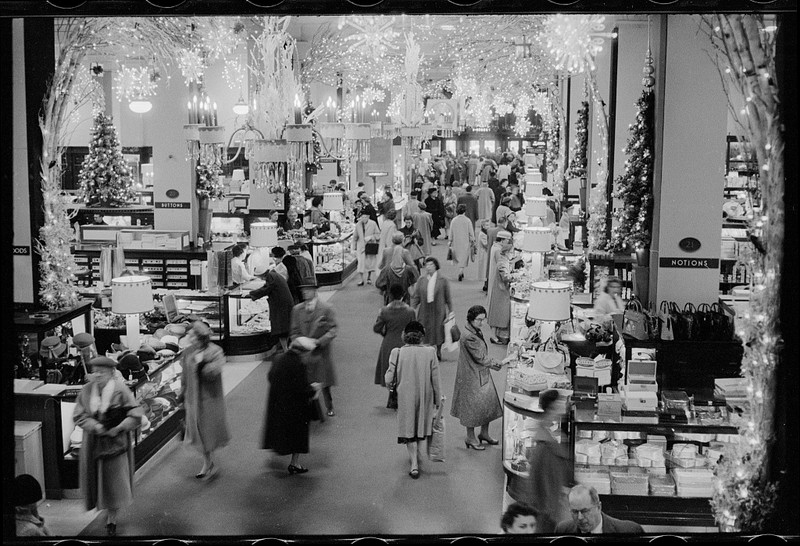
Details on the building exterior are now painted in tradition Beaux Arts colors. Photo by Historic American Buildings Survey.
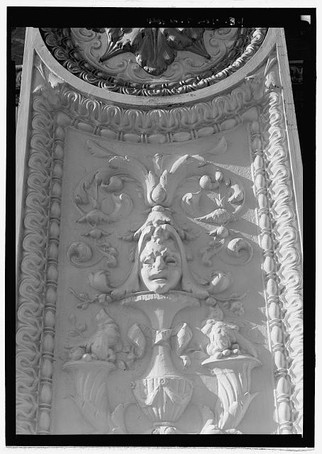
Woodward & Lothrop's monogram is still visible on the building's exterior. Photo by Carol M. Highsmith, Library of Congress.
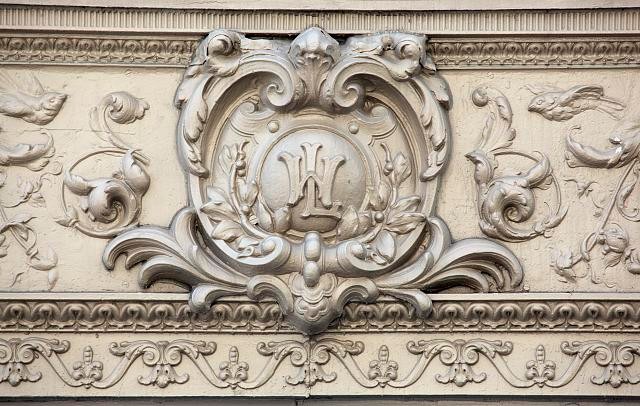
Backstory and Context
Text-to-speech Audio
In 1873, Samuel Walter Woodward (1848-1917) and Alvin Mason Lothrop (1847-1912) founded the Boston Dry Goods House in Massachusetts. In February 1880, they moved to Washington, D.C. and reopened the Boston Dry Goods Store at the intersection of Pennsylvania Avenue and 7th Street NW, now the location of the United States Navy Memorial. They briefly partnered with Charles E. Cochrane, a local merchant, and rebranded the business as the Woodward, Lothrop, and Cochrane Boston House. Under their successful business model, they organized the store in departments, offered clothing one season ahead, and sold merchandise at “one price,” unlike competitors that allowed bartering. By December 1880, Woodward and Lothrop outgrew their space and moved to 921 Pennsylvania Avenue. After differences caused Cochrane to depart and form his own business in 1886, the company was renamed Woodward & Lothrop.
In 1886, Woodward & Lothrop outgrew its space and acquired property at the corner of 11th and F Streets. They hired investor Calderon Carlisle to build their company headquarters and James G. Hill, a prominent local architect known for the original Bureau of Engraving and Printing Building, to create an Italian Renaissance design. Woodward & Lothrop’s new building and location reflected broader patterns of commercialization in the area. Modest storefronts gave way to department stores comprising multiple stories and entire blocks. Opened in 1887, the Carlisle Building included large show windows, a grand staircase, elevators, a marble drinking fountain, and a tourist information desk. Soon, Woodward & Lothrop encompassed almost the entire block, removing existing buildings to create tall, fashionable retail spaces. In 1902, the G Street portion was built by Henry Ives Cobb in the Beaux Arts Renaissance style, with beautiful engravings on the exterior. The F Street portion built by Frederick Pyle in a simple neoclassical design in 1912 and expanded upon in 1925. Finally, in 1926, in-house architect Linden Kent Ashford replaced the Carlisle Building with a new structure that complemented Pyle’s design. The Woodward & Lothrop building is representative of downtown commercial architecture of the late nineteenth and early twentieth century, which were distinct in design and purpose from the city’s federal hubs. Other popular, neighboring department stores of the time included the Hecht Company at F and 7th Streets, Lansburgh’s on 7th Street, Garfinckel’s at F and 14th Streets, and Kann’s at 8th Street and Market Place.
Nicknamed “Woodies,” Woodward & Lothrop grew into one of D.C.’s most expansive and entertaining department stores, comprising an open retail space, customer services, offices, and storage areas, all powered by its own power generating plant. Woodward & Lothrop included departments in men’s and women’s fashions, a jewelry department, engraving shop, optical department, and a furniture showroom. Woodies also sold experiences with its tourist information desk, travel agency, messenger service, beauty shop, tea room, ice cream parlor, and dining room. Elaborate window displays advertised all that Woodies had to offer, especially during the holidays. Staff at the flagship store had increased from 300 when the Carlisle Building was built to 1,700 in 1917, with thousands more added in the coming decades for the holiday season. In the 1930s, Woodward & Lothrop purchased and constructed warehouses, including a service warehouse at 131 M Street, NE, that is now on the National Register of Historic Places. In 1946, Woodies began its franchise when it bought out the Palais Royal department store, establishing Woodies North at 11th and G Streets and several suburban branches in Arlington and Bethesda. Competing with the Hecht Company, Woodies opened another branch in Chevy Chase and more than a dozen other suburban branches throughout the 1950s and 1960s.
Both the flagship and branch stores of Woodward & Lothrop were popular destinations for well-to-do shoppers and tourists, yet not everyone was welcomed equally. Department stores, including Woodward & Lothrop, engaged in discriminatory practices that restricted African Americans shoppers and employees. These practices included segregating entrances and restrooms, prohibiting Black shoppers from trying on merchandise or eating in certain dining areas, and requiring notes that permitted access to certain floors. African American employees were accused of being overpaid for poor work and were assigned the most difficult jobs. Civil rights organizations like the National Association for the Advancement of Colored People (NAACP) and the Congress of Racial Equality (CORE) advocated for integration. After Brown v. Board of Education declared segregation unconstitutional in 1954, Black shoppers received equal access, yet did not experience true social equality. Persisting oppression of African American communities in D.C. gave way to violence after the assassination of Martin Luther King, Jr., on April 4, 1968. Rioters broke department store windows and looted merchandise in protest. In 1969, Woodward & Lothrop began unraveling its discriminatory practices, declaring itself an equal opportunity employer in 1969, and paying Black and white employees equally. Their advertisements and magazine began featuring African Americans more prominently and Black mannequins appeared in store windows for the first time.
The late twentieth century proved difficult for downtown shopping with suburbanization and competitive chain stores like Bloomingdale’s, Macy’s, and Nordstrom. Woodies fumbled through transfers, mergers, and ownership outside of D.C. throughout the 1980s and 1990s. Woodies filed for bankruptcy in 1994 and closed its doors in 1995, selling remaining assets to J.C. Penneys and May Department Stores. The original Woodward & Lothrop building was sold a few times and nearly lost to urban renewal efforts of the 1990s. Its current owners purchased the building in 2002, and renovated it for modern shopping experiences. The colorful Beaux Arts engravings on the building’s exterior are likely its most notable feature. Though historically accurate to the Beaux Arts style, the building was not originally painted these colors. Instead, these colors were added to draw attention to the building’s fine detail. The Woodward & Lothrop monogram is still visible, a subtle testament to the building’s history as a retail destination.
Sources
DeFerrari, John. “Woodies: The Sentimental Favorite.” Streets of Washington: Stories and Images of Historic Washington, D.C. November 14, 2010. Accessed October 2017. http://www.streetsofwashington.com/2010/11/woodward-lothrop-sentimental-favorite.html
Douglas Development Corporation. “Woodward & Lothrop Building: Case Study.” Douglas Development Corporation. Accessed October 2017. http://douglasdevelopment.com/case-studies/the-woodward-lothrop-building/
Kelly, John. “New book details the history of Woodward & Lothrop, a vanished D.C. department store.” Washington Post. April 16, 2014. Accessed October 2017. https://www.washingtonpost.com/local/new-book-details-the-history-of-woodward-and-lothrop-a-vanished-dc-department-store/2014/04/16/cae0ed12-c577-11e3-8b9a-8e0977a24aeb_story.html?utm_term=.0a1d7084631d
Lisicky, Michael. Woodward & Lothrop: A Store Worthy of the Nation's Capital. The History Press, 2013.
Longstreth, Richard. "The Unusual Transformation of Downtown Washington in the Early Twentieth Century." Washington History 13, no. 2 (2001): 50-71. http://www.jstor.org/stable/40073374.
National Park Service. “Downtown Historic District.” National Register of Historic Places Inventory-Nomination Form. Prepared by Tanya Edwards Beauchamp. Washington, D.C.: National Park Service, Department of the Interior, 1984. Accessed October 2017. https://npgallery.nps.gov/GetAsset/a1246444-9d44-4eaf-a3d1-787bc2877f98
National Park Service. “Woodward & Lothrop Warehouse.” National Register of Historic Places Inventory-Nomination Form. Prepared by Dennis Hughes. Washington, D.C.: National Park Service, Department of the Interior, 2005. Accessed October 2017. https://npgallery.nps.gov/GetAsset/103807db-9f4f-4e45-bb18-11ad46ee1ae1/
Schaffer, Dana Lanier. "The 1968 Washington Riots in History and Memory." Washington History 15, no. 2 (2003): 4-33. http://www.jstor.org/stable/40073603.
Tepper, Rachel.” (PHOTOS) Woodward & Lothrop Building’s New Paint Job Shows Off Intricate Details.” Huffington Post. October 25, 2011. Accessed October 2017. https://www.huffingtonpost.com/2011/10/25/photos-woodward-lothrop_n_1029027.html
“Woodies: The Rise and Fall of an Iconic D.C. Department Store.” Metro Connection. WAMU, American University. December 13, 2013. Accessed October 2017. https://wamu.org/story/13/12/13/woodies_the_rise_and_fall_of_an_iconic_dc_department_store/
Images:
“Woodward & Lothrop entrance sign to the former flagship store in Washington.” Photo. 2008. AgnosticPreachersKid, Wikimedia Commons. Accessed October 2017. https://commons.wikimedia.org/wiki/Category:Woodward_%26_Lothrop#/media/File:Woodward_%26_Lothrop_sign_-_Washington,_DC.jpg
“Exterior of Woodward & Lothrop department store, Washington, D.C.” Photo. Circa 1910-1930. National Photo Company Collection. Library of Congress Prints and Photographs Division Washington, D.C. Accessed October 2017. http://www.loc.gov/pictures/item/97510161/
“Woodward & Lothrop Department Store, Washington, D.C. Trucks.” Photo. 1912. Harris and Ewing. Library of Congress Prints and Photographs Division Washington, D.C. Accessed October 2017. http://www.loc.gov/pictures/item/hec2008001194/
“Thos. R. Shipp Co. Atwater Kent window. Woodward & Lothrop.” Photo. Circa 1918-1928. National Photo Company Collection. Library of Congress Prints and Photographs Division Washington, D.C. Accessed October 2017. http://www.loc.gov/pictures/item/npc2008013660/
“Toy dept. of dept. store Woodward & Lothrop [children on ponies].” Photo. October 11, 1924. National Photo Company Collection. Library of Congress Prints and Photographs Division Washington, D.C. Accessed October 2017. http://www.loc.gov/pictures/item/npc2008006791/
“Monday night shoppers at Woodies Dept. Store.” Photo. October 25, 1965. Warren K. Leffler. Library of Congress Prints and Photographs Division Washington, D.C. Accessed October 2017. http://www.loc.gov/pictures/item/2016647321/
“Woodward & Lothrop, Wash. Xmas shoppers.” Photo. November 1957. Marion S. Trikosko. Library of Congress Prints and Photographs Division Washington, D.C. Accessed October 2017. http://www.loc.gov/pictures/item/2017657598/
“Ornamental detail - Woodward & Lothrop Department Store.” National Park Service. Historic American Buildings Survey. Washington, D.C.: National Park Service, Department of the Interior. HABS DC, WASH, 546-4. http://www.loc.gov/pictures/item/dc0476.photos.361188p/resource/
“Architectural details on the Woodward and Lothrop building.” Photo. 2010. Carol M. Highsmith. Library of Congress Prints and Photographs Division Washington, D.C. Accessed October 2017. http://www.loc.gov/pictures/item/2010641342/
